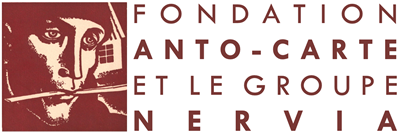
BUISSERET LOUIS (fondateur)
(24 mars 1888, Binche - Bruxelles, 25 mai 1956)
Louis Buisseret is a painter born in Binche in 1888. At the age of sixteen, he entered the Académie des Beaux-Arts in Mons, then under the direction of Émile Motte, where he took engraving classes with Louis Greuze. Later, he attended drawing classes with Herman Richir and painting classes at the Académie des Beaux-Arts in Brussels. There he met Anto Carte, with whom he remained in deep esteem and friendship throughout his life. In 1911, he was awarded the Prix de Rome for engraving. In 1918, he was awarded the Prix du Hainaut. He subsequently participated in numerous exhibitions in Belgium and abroad, including the Salon d'Automne in Paris in 1926.
In 1928, he founded the Nervia group with Anto Carte and Léon Eeckman in an effort to defend Walloon art, which had been faded from the Belgian art scene by Flemish expressionism. The following year (1929), Louis Buisseret received the silver medal at the International Exhibition in Barcelona and was appointed Director of the Académie des Beaux-Arts in Mons. Until 1949, his teaching was noted as much for his spirit of freedom with regard to the various artistic trends as for his respect for a traditional aesthetic.
In 1946 he was awarded the prize of the Royal Academy of Belgium before becoming a member the following year. As a figurative painter with a love of classicism, Louis Buisseret was spiritually attracted to the paintings of the Quattrocento. His colours, his sense of drawing, his refined forms and his idealised nudes are evidence of this influence. His commitment in the artistic field led to various collaborations in the work of the Fine Arts Class of the Royal Academy of Belgium and the Fine Arts Commission of the Province of Hainaut before his death in 1956 in Brussels at his home at 10 avenue Rodin, Ixelles
In 1928, he founded the Nervia group with Anto Carte and Léon Eeckman in an effort to defend Walloon art, which had been faded from the Belgian art scene by Flemish expressionism. The following year (1929), Louis Buisseret received the silver medal at the International Exhibition in Barcelona and was appointed Director of the Académie des Beaux-Arts in Mons. Until 1949, his teaching was noted as much for his spirit of freedom with regard to the various artistic trends as for his respect for a traditional aesthetic.
In 1946 he was awarded the prize of the Royal Academy of Belgium before becoming a member the following year. As a figurative painter with a love of classicism, Louis Buisseret was spiritually attracted to the paintings of the Quattrocento. His colours, his sense of drawing, his refined forms and his idealised nudes are evidence of this influence. His commitment in the artistic field led to various collaborations in the work of the Fine Arts Class of the Royal Academy of Belgium and the Fine Arts Commission of the Province of Hainaut before his death in 1956 in Brussels at his home at 10 avenue Rodin, Ixelles








